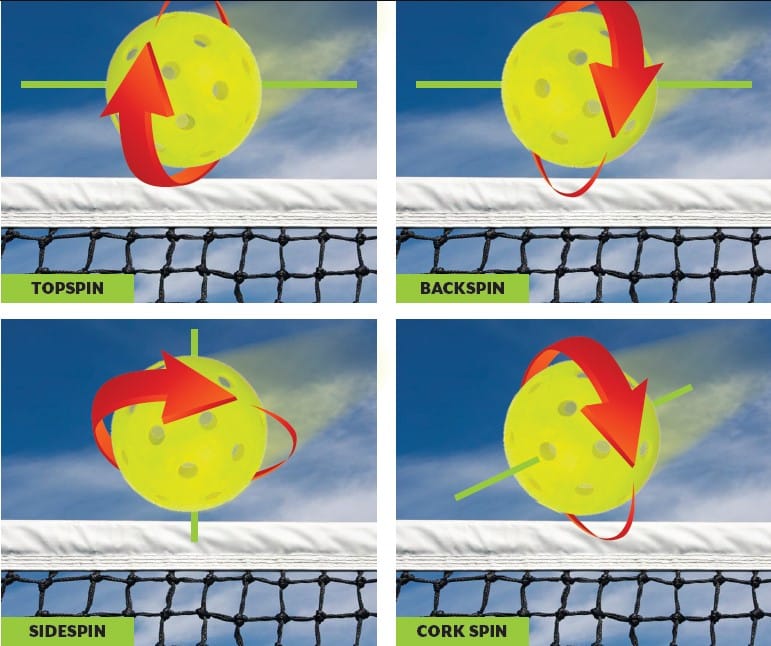Pickleball, a sport with roots dating back to the mid-20th century, has seen a resurgence in popularity in recent years. This unique game, which combines elements of tennis, badminton, and table tennis, requires specific gear, most notably, a pickleball paddle. A proper understanding of pickleball paddle features is essential for both novice players and seasoned enthusiasts alike. In this article, we’ll delve into the main features of these paddles, specifically power, control, spin, pop, solidity, sweet spot, and texture.
Power
The power of a pickleball paddle refers to its ability to transfer energy to the ball, driving it with force. This is largely influenced by the paddle’s weight and material. Heavier paddles, often made from composite materials, offer more power due to their increased mass. However, this doesn’t mean that a heavier paddle is always better; other factors, like player strength and style, also come into play.

Offering excellent value for its price, the Selkirk – SLK Latitude pickleball paddle delivers commendable power. Its design and materials allow for effective energy transfer to the ball, making it a solid choice for players seeking a power boost without a hefty price tag.
Control
Control in a pickleball paddle is about precision and maneuverability. It determines how effectively a player can direct the ball, manipulate its speed, and apply different spins. Lighter paddles made of graphite or polymer are typically associated with greater control. They allow for quick wrist movements, perfect for dinks and soft shots, without sacrificing too much power.
The Selkirk – SLK Halo is a standout pickleball paddle in terms of control. With its precise design and quality materials, it allows players to direct the ball effectively, manipulate its speed, and apply different spins. It’s a fantastic choice for those who prioritize finesse and precision in their gameplay.
Spin
The spin is a crucial factor in many racket sports, and pickleball is no exception. A paddle’s ability to impart spin depends on its surface texture and the materials used. Paddles with a rougher surface provide better friction against the ball, enabling players to create more spin. Some paddles even feature special “spin technology” in their surface design to maximize this effect.

Pop
The “pop” of a paddle refers to the rebound effect when the ball makes contact with it. This characteristic determines how the ball bounces off the paddle’s surface. Paddles with a strong pop can make the ball move faster, but they might also make control more challenging. Typically, composite paddles, due to their layered structure, offer more pop than their polymer or wooden counterparts.
Solidity
Solidity relates to the overall build and durability of the pickleball paddle. Paddles with high solidity are more resistant to wear and tear, able to withstand aggressive gameplay over time. Composite paddles, which often combine a polymer honeycomb core with a fiberglass or carbon fiber face, are known for their high solidity.
Sweet Spot
The sweet spot is the prime area on a paddle’s surface where hitting the ball generates the most power and least vibration. It’s usually located in the center of the paddle. Larger sweet spots are desirable because they increase the chances of striking the ball with optimal force and precision. Paddles with a larger surface area tend to have bigger sweet spots.

Texture
Last but not least, the texture of a paddle is linked to both spin and control. As previously mentioned, a rougher texture allows for more spin as it grips the ball better. Moreover, it can provide a more tactile experience, enabling players to better ‘feel’ the ball and manage its trajectory. On the other hand, a smoother surface tends to provide less friction, potentially offering less control and spin but more speed upon impact.
Adhesion
Adhesion refers to the paddle’s ability to “grip” the ball upon contact. The level of adhesion is influenced primarily by the paddle’s surface material and texture. Paddles with a rougher texture and made from certain materials can grip the ball more effectively, resulting in increased spin and control. However, this could also potentially slow down the ball’s exit speed, affecting the power.
Friction
Friction, while closely related to adhesion, refers more specifically to the resistance encountered when the ball moves across the paddle’s surface. A higher friction surface can slow down the ball slightly, giving players more control over the shot. Furthermore, friction plays a crucial role in the application of spin. Paddles with higher friction can create more spin, allowing for a wider variety of shots. Conversely, paddles with a smoother surface generate less friction, which can result in faster, more powerful shots but less spin and control.
In conclusion, the characteristics of power, control, spin, pop, solidity, sweet spot, texture, adhesion, and friction are all intertwined and depend largely on the design and materials of the pickleball paddle. Understanding these features can help players choose a paddle that best suits their playstyle and improves their overall performance in the game.